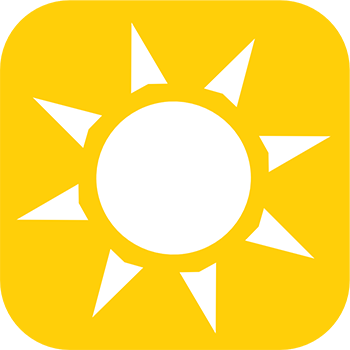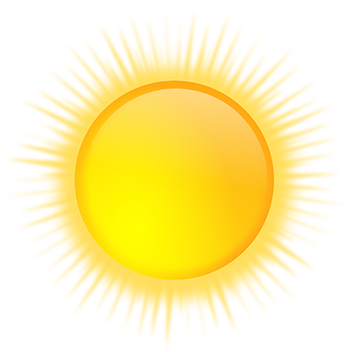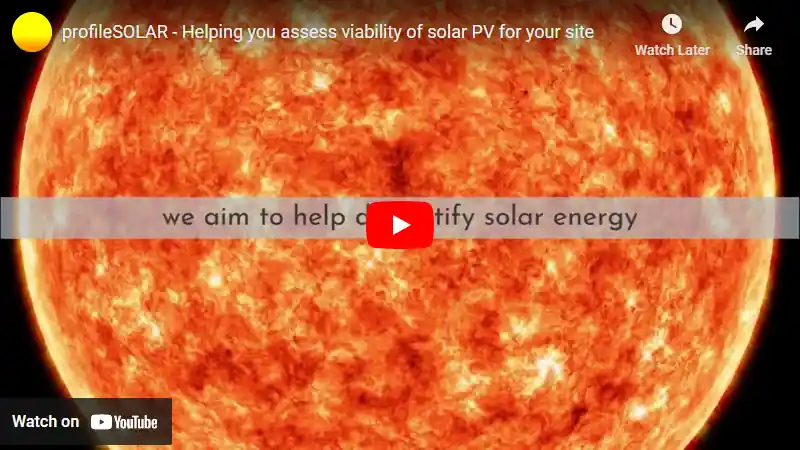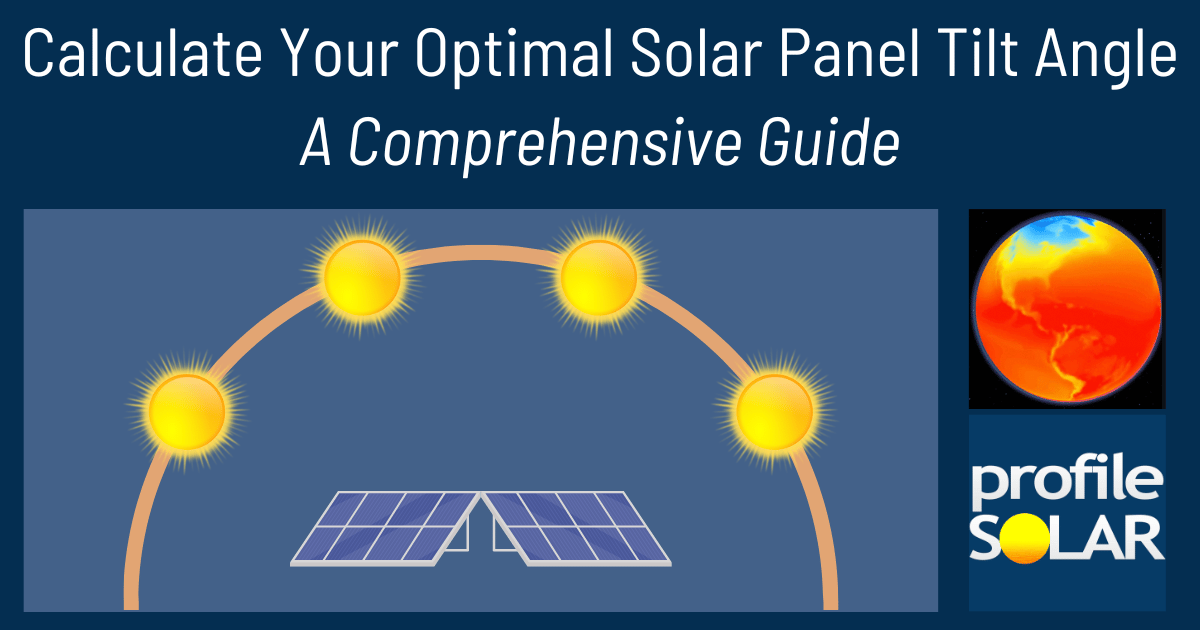

Lake Zurich, Illinois, located in the Northern Temperate Zone, presents a mixed picture for solar energy generation via photovoltaic (PV) panels. This location experiences significant seasonal variations in solar output, which affects the overall efficiency of solar installations throughout the year.
Seasonal Solar Performance
Solar energy production in Lake Zurich peaks during the summer months, with an impressive average daily output of 6.30 kWh per kW of installed solar capacity. Spring follows as the second-most productive season, generating 5.32 kWh per day. However, autumn and winter see a substantial drop in energy production, with outputs of 3.35 kWh and 2.29 kWh per day, respectively.
These figures indicate that Lake Zurich experiences optimal solar conditions from late spring through early fall. During this period, longer days and higher sun angles contribute to increased energy production. Conversely, the shorter days and lower sun angles of late fall and winter result in significantly reduced output.
Optimizing Solar Panel Installation
To maximize year-round solar energy production in Lake Zurich, fixed solar panels should be installed at a tilt angle of 37 degrees facing south. This angle is calculated to optimize the panels' exposure to sunlight throughout the year, taking into account the location's latitude and the Earth's elliptical orbit.
Environmental and Weather Factors
Several environmental and weather factors can impact solar energy production in Lake Zurich:
- Snow accumulation in winter can temporarily reduce panel efficiency
- Cloud cover, particularly common during spring and fall, may decrease solar output
To mitigate these factors, consider installing panels at a steeper angle to promote snow sliding off and using high-efficiency panels that perform better in low-light conditions. Regular maintenance, including snow removal and panel cleaning, can also help maintain optimal performance.
While Lake Zurich may not be ideal for year-round solar energy production due to its seasonal variations, proper installation techniques and maintenance can still make solar PV a viable renewable energy option for this location.
Note: The Northern Temperate Zone extends from 35° latitude North up to 66.5° latitude.
So far, we have conducted calculations to evaluate the solar photovoltaic (PV) potential in 3033 locations across the United States. This analysis provides insights into each city/location's potential for harnessing solar energy through PV installations.
Link: Solar PV potential in the United States by location
Solar output per kW of installed solar PV by season in Lake Zurich
Seasonal solar PV output for Latitude: 42.216, Longitude: -88.0771 (Lake Zurich, United States), based on our analysis of 8760 hourly intervals of solar and meteorological data (one whole year) retrieved for that set of coordinates/location from NASA POWER (The Prediction of Worldwide Energy Resources) API:




Ideally tilt fixed solar panels 37° South in Lake Zurich, United States
To maximize your solar PV system's energy output in Lake Zurich, United States (Lat/Long 42.216, -88.0771) throughout the year, you should tilt your panels at an angle of 37° South for fixed panel installations.
As the Earth revolves around the Sun each year, the maximum angle of elevation of the Sun varies by +/- 23.45 degrees from its equinox elevation angle for a particular latitude. Finding the exact optimal angle to maximise solar PV production throughout the year can be challenging, but with careful consideration of historical solar energy and meteorological data for a certain location, it can be done precisely.
We use our own calculation, which incorporates NASA solar and meteorological data for the exact Lat/Long coordinates, to determine the ideal tilt angle of a solar panel that will yield maximum annual solar output. We calculate the optimal angle for each day of the year, taking into account its contribution to the yearly total PV potential at that specific location.

Seasonally adjusted solar panel tilt angles for Lake Zurich, United States
If you can adjust the tilt angle of your solar PV panels, please refer to the seasonal tilt angles below for optimal solar energy production in Lake Zurich, United States. As mentioned earlier, for fixed-panel solar PV installations, it is optimal to maintain a 37° South tilt angle throughout the year.
| Overall Best Summer Angle | Overall Best Autumn Angle | Overall Best Winter Angle | Overall Best Spring Angle |
|---|---|---|---|
| 26° South in Summer | 46° South in Autumn | 56° South in Winter | 35° South in Spring |
Our recommendations take into account more than just latitude and Earth's position in its elliptical orbit around the Sun. We also incorporate historical solar and meteorological data from NASA's Prediction of Worldwide Energy Resources (POWER) API to assign a weight to each ideal angle for each day based on its historical contribution to overall solar PV potential during a specific season.
This approach allows us to provide much more accurate recommendations than relying solely on latitude, as it considers unique weather conditions in different locations sharing the same latitude worldwide.
Calculate solar panel row spacing in Lake Zurich, United States
We've added a feature to calculate minimum solar panel row spacing by location. Enter your panel size and orientation below to get the minimum spacing in Lake Zurich, United States.
Our calculation method
- Solar Position:
We determine the Sun's position on the Winter solstice using the location's latitude and solar declination. - Shadow Projection:
We calculate the shadow length cast by panels using trigonometry, considering panel tilt and the Sun's elevation angle. - Minimum Spacing:
We add the shadow length to the horizontal space occupied by tilted panels.
This approach ensures maximum space efficiency while avoiding shading during critical times, as the Winter solstice represents the worst-case scenario for shadow length.
Topography for solar PV around Lake Zurich, United States
The area around Lake Zurich in Illinois, United States, is characterized by gently rolling terrain typical of the Midwestern landscape. This region, located in the northeastern part of the state, is part of the larger Chicago metropolitan area. The topography is generally flat to slightly undulating, with subtle elevation changes throughout the area.
Lake Zurich itself is a small glacial lake, formed thousands of years ago during the last ice age. The surrounding land features low hills and shallow depressions, creating a modest but pleasant variation in the landscape. The area's elevation typically ranges from about 800 to 900 feet above sea level, with only minor fluctuations.
The region around Lake Zurich is primarily suburban, with a mix of residential areas, small commercial zones, and pockets of preserved natural spaces. Trees and grassy areas are common, interspersed with human-made structures and infrastructure. The gentle terrain has made this area attractive for development, resulting in a landscape that blends natural features with suburban elements.
Suitability for Large-Scale Solar PV
When considering areas nearby that would be most suited to large-scale solar PV installations, several factors come into play:
1. Open spaces: The most suitable locations would be areas with large, unobstructed open spaces. farmland or unused fields to the west and northwest of Lake Zurich could potentially be suitable, as these areas tend to have fewer trees and buildings that could cast shadows on solar panels.
2. Flat terrain: While the entire region is relatively flat, areas with the least variation in elevation would be ideal for solar installations. This would likely include former agricultural lands or open meadows in the surrounding countryside.
3. Proximity to infrastructure: Areas close to existing electrical infrastructure would be advantageous for connecting solar installations to the grid. Locations near major roads or power lines could be more suitable from this perspective.
4. Zoning considerations: Industrial or commercial zones on the outskirts of suburban areas might be more easily repurposed for solar installations, compared to residential or protected natural areas.
Given these factors, the most promising areas for large-scale solar PV installations would likely be found in the less densely populated regions to the west and northwest of Lake Zurich. These areas generally have more open space, flatter terrain, and potentially fewer obstacles to development. However, any specific site selection would require detailed analysis of local regulations, environmental impact, and grid connection possibilities.
United States solar PV Stats as a country
United States ranks 2nd in the world for cumulative solar PV capacity, with 95,209 total MW's of solar PV installed. This means that 3.40% of United States's total energy as a country comes from solar PV (that's 26th in the world). Each year United States is generating 289 Watts from solar PV per capita (United States ranks 15th in the world for solar PV Watts generated per capita). [source]
Are there incentives for businesses to install solar in United States?
Yes, there are several incentives for businesses wanting to install solar energy in the United States. These include federal tax credits, state and local rebates, net metering policies, and renewable energy certificates (RECs). Additionally, many states have enacted legislation that requires utilities to purchase a certain amount of electricity from renewable sources such as solar.
Do you have more up to date information than this on incentives towards solar PV projects in United States? Please reach out to us and help us keep this information current. Thanks!
Citation Guide
Article Details for Citation
Author: Aaron Robinson
Publisher: profileSOLAR.com
First Published: Wednesday 14th of August 2024
Last Updated: Wednesday 14th of August 2024
Tell Us About Your Work
We love seeing how our research helps others! If you've cited this article in your work, we'd be delighted to hear about it. Drop us a line via our Contact Us page or on X, to share where you've used our information - we may feature a link to your work on our site. This helps create a network of valuable resources for others in the solar energy community and helps us understand how our research is contributing to the field. Plus, we occasionally highlight exceptional works that reference our research on our social media channels.
Feeling generous?

Share this with your friends!


Compare this location to others worldwide for solar PV potential
The solar PV analyses available on our website, including this one, are offered as a free service to the global community. Our aim is to provide education and aid informed decision-making regarding solar PV installations.
However, please note that these analyses are general guidance and may not meet specific project requirements. For in-depth, tailored forecasts and analysis crucial for feasibility studies or when pursuing maximum ROI from your solar projects, feel free to contact us; we offer comprehensive consulting services expressly for this purpose.
Helping you assess viability of solar PV for your site
Calculate Your Optimal Solar Panel Tilt Angle: A Comprehensive Guide
Enhance your solar panel's performance with our in-depth guide. Determine the best tilt angle using hard data, debunk common misunderstandings, and gain insight into how your specific location affects solar energy production.






